Lorem Ipsum is simply dummy text of the printing and typesetting industry. Lorem Ipsum has been the industry's standard dummy text ever since the 1500s, when an unknown printer took a galley of type and scrambled it to make a type specimen book. It has survived not only five centuries, but also the leap into electronic typesetting, remaining essentially unchanged. It was popularised in the 1960s with the release of Letraset sheets containing Lorem Ipsum passages, and more recently with desktop publishing software like Aldus PageMaker including versions of Lorem Ipsum.
Lorem Ipsum is simply dummy text of the printing and typesetting industry. Lorem Ipsum has been the industry's standard dummy text ever since the 1500s, when an unknown printer took a galley of type and scrambled it to make a type specimen book.
Download PDF Read MoreStretching for 50 km along the base of the rusty-gold 600-metre high Rift Valley escarpment, Lake Manyara is a scenic gem, with a setting extolled by Ernest Hemingway as “the loveliest I had seen in Africa”. The compact game-viewing circuit through Manyara offers a virtual microcosm of the Tanzanian safari experience. Manyara has an area of 330 sq km (127 sq miles), of which up to 200 sq km (77 sq miles) turns to lake when water levels are high. The park is located in northern Tanzania (126 km / 80 miles) drive from west of Arusha along a newly surfaced road, close to the ethnically diverse market town of Mto wa Mbu.
Manyara provides the perfect introduction to Tanzania’s birdlife. More than 400 species have been recorded, and even a first-time visitor to Africa might reasonably expect to observe 100 of these in one day. Highlights include thousands of pink-hued flamingos on their perpetual migration, as well as other large waterbirds such as pelicans, cormorants and storks. This alkaline lake is however home to herds of large mammals such as hippos, buffaloes, elephants and zebras. Common predators found here includes hyena, lion, leopard and cheetah are rarely spotted. Large concentration of baboons and other common monkey family are easily seen.
Lake Tanganyika is outstanding for its extraordinary north-south extension (677 km) and depth (1,436 m). It is the second largest of African lakes and the second deepest (next to Lake Baikal in central Russia) and the longest lake in the world. Its very ancient origin, only competitor by such old lakes as Baikal, and a long period of isolation resulted in the evolution of a great number of indigenous organisms, including brilliantly colored cichlid fishes, well-known gastropods with the appearance of marine snails, and so on. Of the 214 species of native fishes in the lake, 176 are endemic; the number of endemic genera amounts to 30 in cichlids and 8 in non- cichlid fishes. The surrounding areas are mostly mountainous with poorly developed coastal plains except on part of the east side. Especially on the western coast, steep side-walls of the Great Rift Valley reaching 2,000 m in relative height form the shoreline. The sole overflow river, the Lukuga, starts from the middle part of western coast and flows westward to join the Zaire River draining into the Atlantic.
It is the inland sea that sits at the heart of the continent bordered by Tanzania, Uganda and Kenya. It’s the only and reliable source of the River Nile whose waters rise from its northern shores, and world’s second largest lake with fresh water and also home for Nile perch. There are numerous small Islands around the coast, which offer great opportunities for fishing i.e. Nansio Island as well as wildlife such as saa nane Island and Rubondo island National Park.
The Lake Rukwa is the forth largest lake in Tanzania located on the south-western regions of Rukwa and Mbeya. It is within the Great Rift Valley system of which Lake Nyasa is a part. It covers an area of about 2650 square kilometres in between Lake Tanganyika and Nyasa with average depth of 3 to 5 meters. The shallow alkaline lake is cyclical in nature in terms of size which has been caused by the varying inflow of streams, for example, in some years in the past the lake shrank to a length of about 50 kilometers, years later it expanded to 135 kilometres long. However, the Lake Rukwa has a large drainage basin in Tanzania with an area of 81,000 square kilometers. The lake does not have the outflow. The rivers those are flowing in to it include Rungwa, Wuku, Lukwate, Kikambo, Luika, Luiche, Kavuu, Chambua, and Songwe.
The lake is rich with wildlife such as the largest concentration of crocodiles and hippopotamus, more than half of it lies within Newly Extended Katavi National Park. There are more than 350 species of birds listed in Lake Rukwa which found in its surroundings. The large numbers of water birds found here include: African skimmer, glossy ibis, lesser flamingo, spur-winged goose, and white pelican; Papyrus swamps are home to the rare shoebill stork and the Tanzania masked weaver.
Lake Natron an alkaline lake located in northern Tanzania contiguous to the Tanzania – Kenyan border in Africa’s Great Rift Valley, in Ngorongoro and Monduli Districts within the Arusha Region. The lake is quite shallow, less than three meters (10 feet) deep, and varies in width depending on its water level and it is surrounded by Rift Valley escarpments and volcanic mountain Oldoinyo Lengai and other small mountains as well as number of hills. It is the only regular breeding area for Lesser Flamingos in East Africa and furthermore, it offers feeding and roosting opportunities for an estimated 100,000 individuals of other species of water birds many of which are Pale arctic migrants. In the lake margins springs and a few perennial streams are a source of freshwater for Maasai, cattle, wildlife and flamingos that co-exists in this huge alkaline lake basin.
Lake Eyasi, located south of the Serengeti National Park and immediately to the southwest of the Ngorongoro Crater in the Ngorongoro Highlands area of Tanzania is one of several lakes on the floor of the Great Rift Valley which lies west of Lake Manyara and approximately 95 miles (155 km) southwest of Arusha. At an elevation of about 3,400 feet (1,040 m), the lake covers an area of about 400 square miles (1,050 square km) and occupies the bottom of a bowl like depression in a region of volcanic activity. The walls of the lake are made of with purple lava enclosing a broad expanse of white alkaline shallows with some fresh water at depths below 33 feet (10 m). The lake has no outlet; its main inlet is the Sibiti River on the southwest. The lake drains to an area of about 25,300 square miles (65,500 square km). Greater and lesser flamingos inhabit at the lake’s shore in vast flocks.
Straddling the border between Tanzania, Malawi and Mozambique, the 31,000 sq. km, this Lake also called Lake Malawi and is East Africa’s third largest lake of its most beautiful.
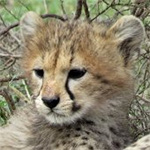
Tanzania is great to visit any time of year. Most people avoid the rainy months of April, May, and November. Some travelers like to go during the peak migration season of wildebeest, zebras and number of antelopes in Serengeti National Park, Ngorongoro Highlands and Masai Mara in Kenya. Not only that most people also like to lay on the sunshine of the Zanzibar beach lure water and white sand beaches as well as diving to the coral reefs.
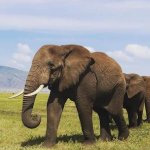
We use 5 or 7 passenger 4-wheel-drive Land Cruisers, Toyota Hiace as well as Land Rovers all with viewing roofs for the safaris. Take a note that a normal minibus or saloon can be used for transfer to and from the airport depending on the size of the group which is visit the country.
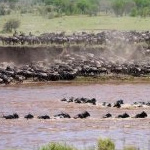
They are licensed, trained, friendly, and have years of experience in Tanzania safari! All of them speaks fluent English and others have additional languages of your mother tongue to meet your comfort and informative safari in Tanzania.
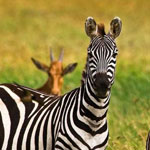
You can buy any drinks along your way to the Tanzania safari. There will be mini-markets in town and also you can have some at your hotel or lodge that you will spend an overnight there.
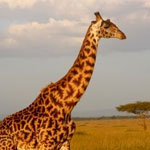
With modernized World most of the lodges and tented camps serve breakfast and dinner, typically buffet-style. European, Asian and African cuisines are served in a high standard. Due to the fact that you will be spending your afternoon doing game drive often you will have to take your lunch box with you.
If by chance the itinerary shows that you will take your hot lunch at the hotel then there is no need of packed lunch. Basically lunch at the lodge follows with a rest before proceeding with late afternoon game drive.
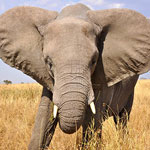
The great extraordinary animal kingdom migration is an annual migration of about 1 million wildebeest, 300000 zebras and 200000 gazelles migrating from Serengeti National Park to Ngorongoro crater and contiguous Masai Mara National Reserve searching for fresh grasses as well as water. This is a honeymoon (easy to hunt) period for the crocodile in Grumeti River and other carnivores such as lion and leopard while the migration is taking place. For more information on how the migration takes place please click here.
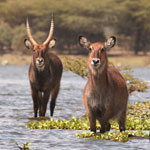
The best time to see the migration in Tanzania is January-March and June-August and in Masai Mara National Reserve in Kenya it is often best September-October. These are also the most popular times to go, so you will need to book well in advance.
You will see abundance of wildlife all year round. However it should be clear that changing of weather can affect this migration circular and a need for some two to three days in Serengeti National Park give you a wide chance of view migration properly.
Whether you are looking to explore the wildlife of the Serengeti, or begin your expedition up Mount Kilimanjaro, we have something suitable for all of you. Get in touch with us today and our team of specialists will help build your experience of a lifetime to Tanzania
Read More